This article was medically reviewed by Luba Lee, FNP-BC, MS. Luba Lee, FNP-BC is a Board-Certified Family Nurse Practitioner (FNP) and educator in Tennessee with over a decade of clinical experience. Luba has certifications in Pediatric Advanced Life Support (PALS), Emergency Medicine, Advanced Cardiac Life Support (ACLS), Team Building, and Critical Care Nursing. She received her Master of Science in Nursing (MSN) from the University of Tennessee in 2006.
There are 15 references cited in this article, which can be found at the bottom of the page.
This article has been viewed 78,114 times.
You can develop red, irritated skin due a cut or a rash. You may also have skin issues like dry patches or eczema that you would like to clear up quickly. Healing skin fast can be done using commercial products like antibiotic ointment. As well, the ointment may work more quickly than natural remedies like honey and tea tree oil. Good home care can help your skin to heal fast, with minimal scarring. If your skin does not get better or you believe it may be infected, see your dermatologist right away for treatment.
Steps
Healing Cuts and Scrapes
-
1Wash the area with warm water. Place the cut or scrape under warm running water to remove surface dirt and debris. Make sure the water is not too hot, as it can damage your skin further. Allow the water to rinse off the cut or scrape.[1]
- As you rinse off the cut or scrape, notice if it is very deep or large. If you can see tissue or fat inside the cut or it is 3 inches (7.6 cm) or larger in diameter, go to your doctor right away. You may need stitches for the cut to properly heal.
-
2Apply an antibiotic ointment. Look for an over-the-counter antibiotic ointment at your local drugstore or pharmacy. Use clean fingers to apply the ointment one to three times a day or as directed on the label. The ointment will help to keep the area moist and prevent bacteria from getting into broken skin, allowing it to heal.[2]
- You may use antibiotic ointments like Bactine or Polysporin.
Advertisement -
3
-
4Change the dressing once a day and keep the cut or scrape covered. To ensure the cut or scrape heals quickly, make sure you put on a fresh bandage every 24 hours. Remove the old bandage and apply antibiotic ointment to the cut. Then, put on a new bandage. Keep the cut or scrape covered so it can stay moist and heal quickly.[4]
- Make sure you keep the cut or scrape covered when you go outside and expose your skin to the sun. The sun can discolor the cut or scrape, leading to a slower healing time.
- You should take off the bandage only when you are in the shower, as the moisture will help the cut to heal.
-
5Go to the doctor if the cut or scrape does not heal after 1 to 3 weeks. Most minor cuts and surface scrapes will heal within 1 to 3 weeks with no scarring. If the cut or scrape does not show signs of improvement, or a scab does not form, go to your doctor. They can assess the cut or scrape and determine if it has become infected.[5]
Addressing Rashes and Skin Irritation
-
1Use a cool compress to soothe your skin. If the rash is swollen or irritated, soothe it by applying a clean towel soaked in cold water. Lay the compress over the irritated area and leave it on for 5-10 minutes at a time.[6]
- Do not rub the compress on your skin, as this can irritate the rash further.
- Change the compress every 5-10 minutes so the area stays cool.
-
2Apply hydrocortisone ointment. Hydrocortisone helps to reduce redness and swelling on your skin. Look for hydrocortisone cream at your local drugstore or pharmacy. Apply the cream once or twice a day to your skin with a clean finger.[7]
- Stop using the hydrocortisone ointment once your skin heals, as using it on healthy skin can cause redness.
-
3Apply aloe vera or calendula to irritated skin. Get aloe vera in the form of a gel or ointment. You can also use the fresh juice from an aloe vera plant on your skin. Put one to two layers of aloe vera on your skin once or twice a day to help it heal.[8]
- Calendula usually comes in the form of an ointment. Apply it with clean fingers to the area one to two times a day. Look for calendula ointment at your local health food store or online.
-
4Make a tea tree oil compress to soothe dry skin. Tea tree oil has antibacterial and anti-inflammatory properties that can help heal irritated skin. Dilute the tea tree oil before you apply it, as it can be very strong. Combine two to four drops of tea tree oil with 1 to 2 tablespoons (15 to 30 ml) water. Dip a cotton pad or a clean cloth in the mixture and dab it on the scrape or cut. Do this once a day until your skin heals.[9]
- Look for tea tree oil at your local health food store or online.
- You can also have a warm bath with two to four drops of tea tree oil in the water, exposing your skin to the oil.
-
5Use petroleum jelly on a rash. Thick gels like petroleum jelly (like Vaseline) are good for soothing skin that is dry and irritated due to a rash. Use clean fingers to apply one to two layers of petroleum jelly on the area. Do this 1-3 times a day to keep the area moist and to reduce any itching or swelling.[10]
-
6Avoid using soaps and lotions with harsh ingredients and fragrance. Chemicals and artificial fragrances can irritate your skin further. Stay away from soaps, lotions, and sprays that contain these ingredients, so your skin can heal.[11]
- Read the ingredients label on any soaps or lotions you use to make sure they do not contain harsh chemicals or additives.
-
7Do not scratch or pick at the rash. Resist the temptation to scratch the rash, as this will only make it worse. Cover it with thick clothing or a bandage to protect it and avoid scratching it.[12]
- If the rash starts to flake, do not pick off dry or peeling skin. This will just prolong the healing process. Let the skin come off on its down.
-
8See your dermatologist if the rash is painful, swollen, or hot to the touch. These may be signs that the rash is infected or you have developed a serious skin issue. You should also go to the doctor if you develop a fever, chest pain, or have trouble breathing.[13]
- Your dermatologist will examine your skin to determine the cause. They may also take a sample of your skin to test it so they can figure out what is causing your skin issue.
-
9Discuss your treatment options. Your dermatologist may prescribe a topical antibiotic ointment if your skin issue is due to a rash or an allergic reaction. They may also suggest you avoid foods or substances that may be causing your skin allergy.[14]
Healing Dryness and Eczema
-
1Apply mineral oil and petroleum jelly to heal dry skin or eczema. Mineral oil helps to keep your skin moist and soft. Petroleum jelly is also a good option, as it forms a thick barrier on your skin to keep it from becoming more dry. Use clean fingers to apply the mineral oil or petroleum jelly to any affected areas 1-3 times a day.[15]
-
2Use Manuka honey on dry skin or eczema. Manuka honey has antibacterial and anti-inflammatory properties. It is more potent than other types of honey and can help to heal dry skin and eczema. Apply the honey to your skin with clean fingers and let it dry. Do this several times a day to help the area heal fast.[16]
- Look for honey that has a high “unique Manuka factor” (UMF) of at least 10 or higher. You can buy Manuka honey at your local health food store or online.
-
3Apply a calming oil serum on dry skin. Oil serums contain healing ingredients to help soothe your skin and reduce swelling or irritation. Buy calming oil serum at your local drugstore or online. Put 1 to 2 dabs of oil serum on your skin 1 to 2 times a day, preferably in the morning and at night.
- Make sure the oil serum does not contain any fragrance, harsh chemicals or artificial ingredients, as they can irritate your skin.
-
4Take short showers or baths to keep your skin hydrated. Keep the bathroom door closed when you shower or bath, to keep the room moist. Have 5 to 10 minute showers or bath with warm, rather than hot water.[17]
- Taking long hot showers or baths can dry out your skin and irritate it further.
- Do not expose any open wounds or cuts on your skin to hot water in the shower or bath, as this can damage the skin further. Use warm water instead.
-
5Use a gentle cleanser. Make sure the cleanser does not contain any fragrances, preservatives, dyes, or chemicals. Look for a cleanser made for dry skin and eczema. The cleanser should be gentle and healing on your skin.[18]
- You can find a list of cleansers for eczema on the National Eczema Association website: https://nationaleczema.org/eczema-products/?pg=1&ppg=6.
-
6Apply a moisturizer as soon as you finish showering or bathing. Pat yourself dry with a towel and put on a soothing moisturizer immediately afterward. This will trap the moisture in your skin and prevent it from drying out. Use a moisturizer that contains natural ingredients like shea butter, oats, and essential oils like olive oil or jojoba oil.[19]
- Moisturizers that contain mineral oil, lactic acid, and lanolin can also be healing for your skin.
- Apply an oil serum or a healing ointment to your skin over the moisturizer to keep it hydrated and to help it to heal.
-
7Resist the urge to scratch or itch the eczema. Rubbing, itching, and touching your skin will only make it worse. Try to avoid scratching any affected areas, as this can spread eczema to other parts of your body. Wear thick clothing and keep the area covered so you are not tempted to scratch.[20]
- Try applying mineral oil or petroleum jelly when you have the urge to scratch, so you can soothe the area without damaging it.
-
8Wear clothing made of breathable materials. Go for clothing made of cotton and linen. Wear clothing that has wicking properties so your skin does not become irritated throughout the day.[21]
- Avoid clothing made of wool, nylon, and other non-breathable fabrics.
-
9Go to your dermatologist if your skin does not improve within 2 to 3 weeks. If your skin does not improve with home care, go to your dermatologist for guidance. They can prescribe medicated cream to treat eczema and very dry skin. They may also suggest lifestyle and diet changes to address the issue.[22]
Expert Q&A
-
QuestionWhat can I use to get rid of dark marks on my skin?
 Luba Lee, FNP-BC, MSLuba Lee, FNP-BC is a Board-Certified Family Nurse Practitioner (FNP) and educator in Tennessee with over a decade of clinical experience. Luba has certifications in Pediatric Advanced Life Support (PALS), Emergency Medicine, Advanced Cardiac Life Support (ACLS), Team Building, and Critical Care Nursing. She received her Master of Science in Nursing (MSN) from the University of Tennessee in 2006.
Luba Lee, FNP-BC, MSLuba Lee, FNP-BC is a Board-Certified Family Nurse Practitioner (FNP) and educator in Tennessee with over a decade of clinical experience. Luba has certifications in Pediatric Advanced Life Support (PALS), Emergency Medicine, Advanced Cardiac Life Support (ACLS), Team Building, and Critical Care Nursing. She received her Master of Science in Nursing (MSN) from the University of Tennessee in 2006.
Board-Certified Family Nurse Practitioner Apply vitamin E oil to your skin at night. Also, use sunscreen on your skin that's exposed to the sunlight to prevent and improve dark post-inflammatory scars.
Apply vitamin E oil to your skin at night. Also, use sunscreen on your skin that's exposed to the sunlight to prevent and improve dark post-inflammatory scars. -
QuestionWhy is it important that my skin heals fast?
 Luba Lee, FNP-BC, MSLuba Lee, FNP-BC is a Board-Certified Family Nurse Practitioner (FNP) and educator in Tennessee with over a decade of clinical experience. Luba has certifications in Pediatric Advanced Life Support (PALS), Emergency Medicine, Advanced Cardiac Life Support (ACLS), Team Building, and Critical Care Nursing. She received her Master of Science in Nursing (MSN) from the University of Tennessee in 2006.
Luba Lee, FNP-BC, MSLuba Lee, FNP-BC is a Board-Certified Family Nurse Practitioner (FNP) and educator in Tennessee with over a decade of clinical experience. Luba has certifications in Pediatric Advanced Life Support (PALS), Emergency Medicine, Advanced Cardiac Life Support (ACLS), Team Building, and Critical Care Nursing. She received her Master of Science in Nursing (MSN) from the University of Tennessee in 2006.
Board-Certified Family Nurse Practitioner Skin is the first barrier from the outside world. When your wound heals quickly, you decrease the chances of pathogens entering your body and your risk of infection.
Skin is the first barrier from the outside world. When your wound heals quickly, you decrease the chances of pathogens entering your body and your risk of infection.
References
- ↑ https://www.seattlechildrens.org/conditions/a-z/wound-infection/
- ↑ https://kidshealth.org/en/teens/cuts.html
- ↑ https://www.aafp.org/afp/2002/0715/p315.html
- ↑ https://www.aafp.org/afp/2002/0715/p315.html
- ↑ https://www.nhs.uk/conditions/cuts-and-grazes/
- ↑ https://www.drugs.com/cg/acute-rash.html
- ↑ https://www.nhs.uk/medicines/hydrocortisone-skin-cream/
- ↑ https://www.ncbi.nlm.nih.gov/pmc/articles/PMC3931201/
- ↑ https://www.uofmhealth.org/health-library/tn2873spec
- ↑ https://www.drugs.com/cg/acute-rash.html
- ↑ https://www.aad.org/public/skin-hair-nails/skin-care/dry-skin
- ↑ https://www.drugs.com/cg/acute-rash.html
- ↑ https://www.aad.org/public/everyday-care/itchy-skin/rash/rash-101
- ↑ https://www.drugs.com/health-guide/rash.html
- ↑ https://nationaleczema.org/bathing-moisturizing-and-wet-wraps/
- ↑ https://www.ncbi.nlm.nih.gov/pmc/articles/PMC5418133/
- ↑ https://www.aad.org/public/skin-hair-nails/skin-care/dry-skin
- ↑ https://nationaleczema.org/eczema/treatment/bathing/
- ↑ https://www.aad.org/public/skin-hair-nails/skin-care/dry-skin
- ↑ https://nationaleczema.org/eczema/treatment/
- ↑ https://nationaleczema.org/eczema/treatment/
- ↑ https://www.drugs.com/health-guide/rash.html
About This Article
The key to helping your skin heal fast is keeping it clean and sterile. When you first get a cut or scrape, rinse it with warm water to remove any dirt or debris. Then, apply an antibiotic ointment and cover it with a Band-Aid or bandage to protect the wound from bacteria. If you have a rash or irritated skin, apply a damp, cold towel to your skin to soothe it. Wash your compress every 10 minutes to keep it cool. You can also apply a layer of aloe vera, petroleum jelly, or calendula to your skin once or twice a day to help it heal. Try to avoid scratching or picking at your rash, since this can make it worse. For more tips from our Medical co-author, including how to heal eczema fast, read on.
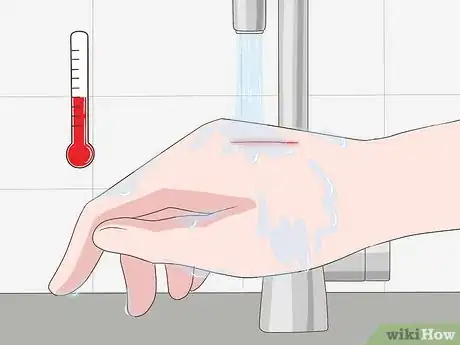
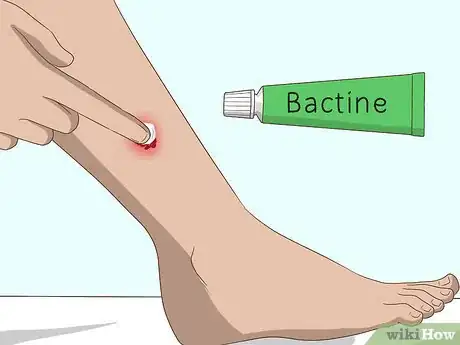
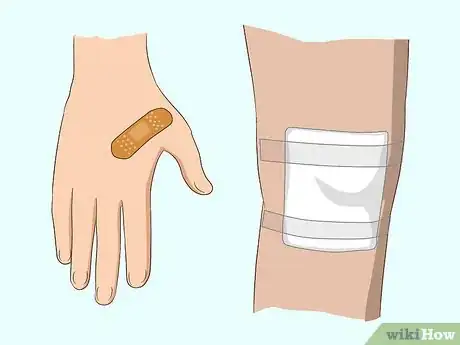
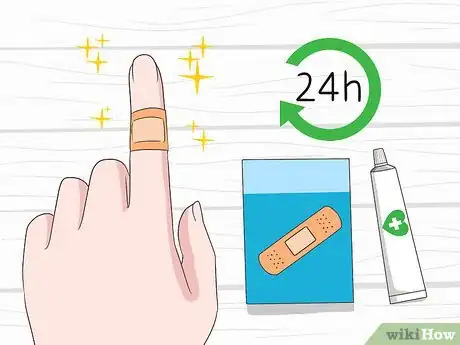
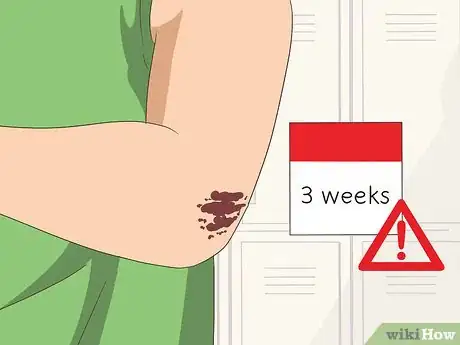
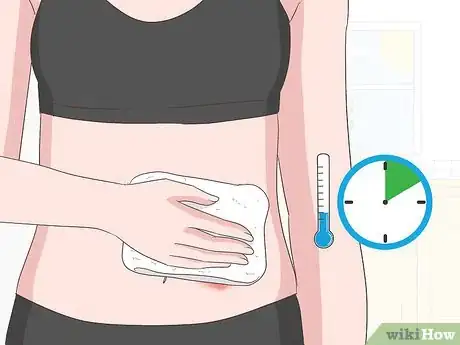

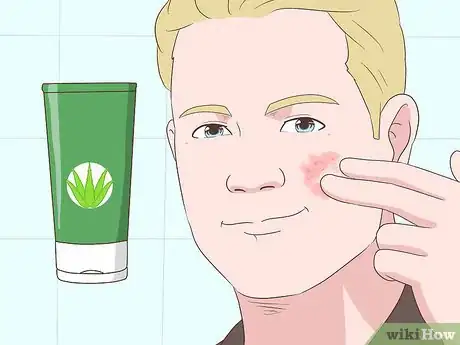
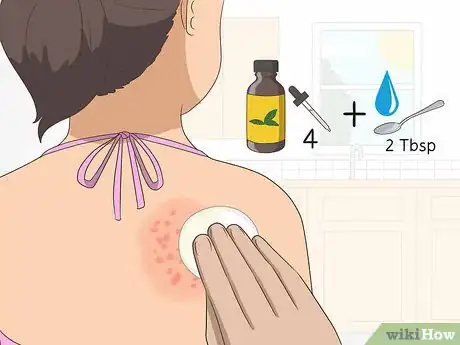
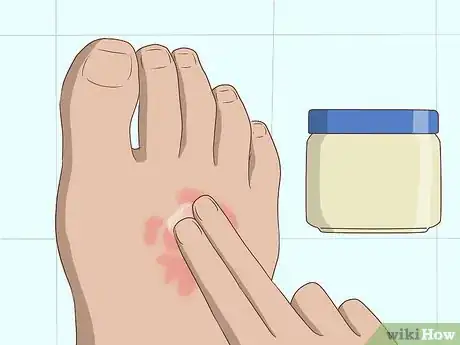
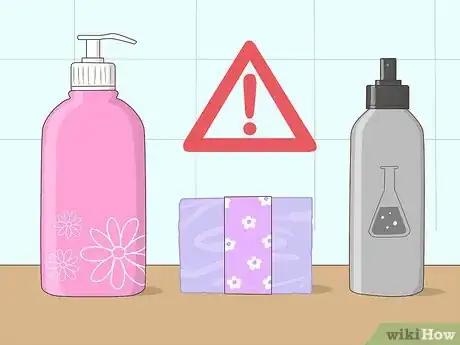
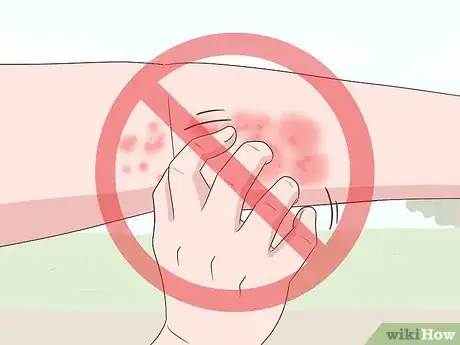
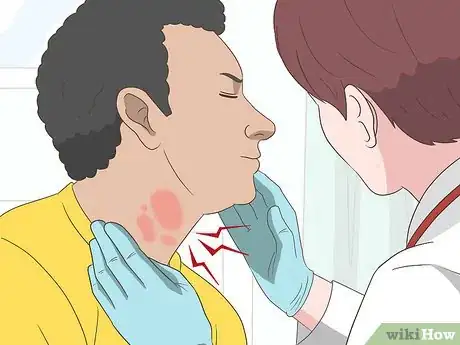
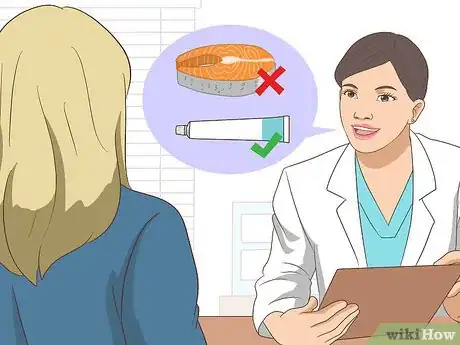
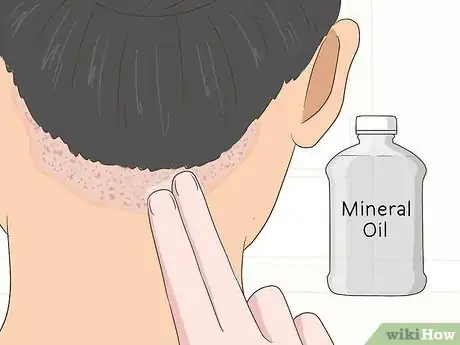
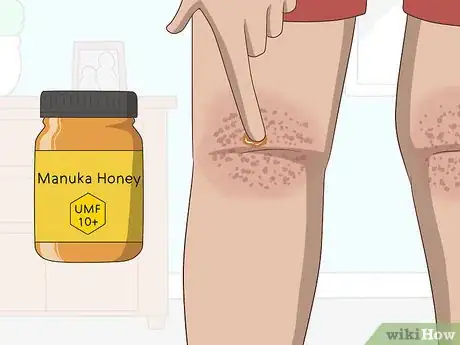

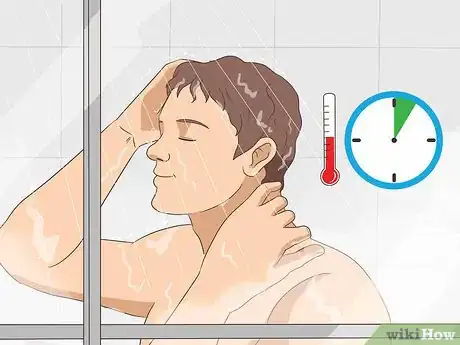
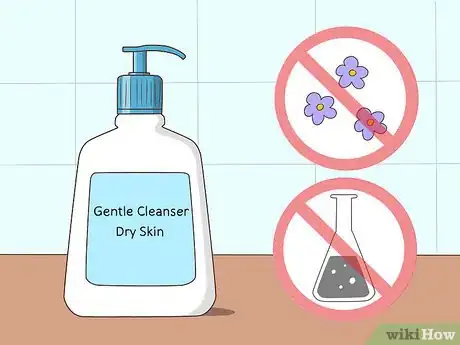

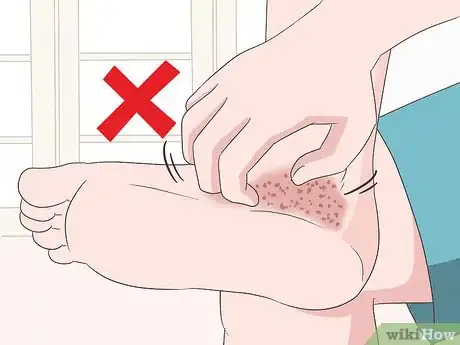

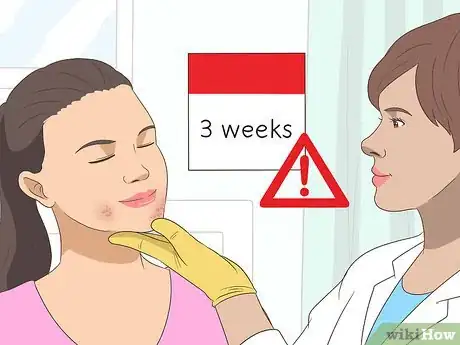
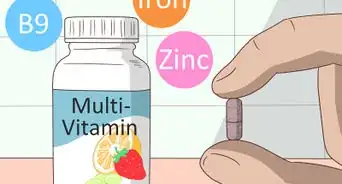
-Step-10-Version-2.webp)
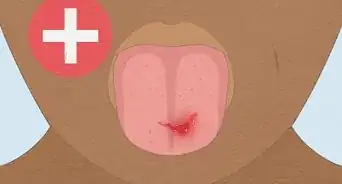


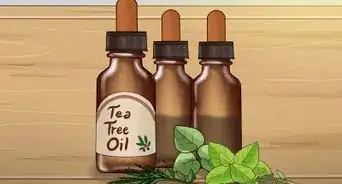
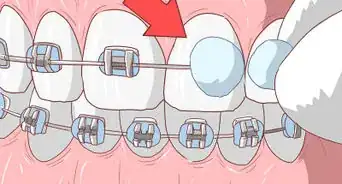
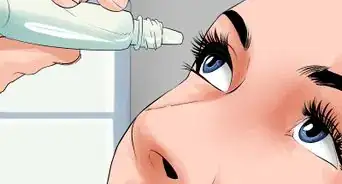

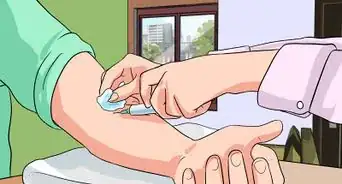











-Step-10-Version-2.webp)
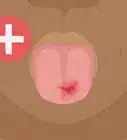




































Medical Disclaimer
The content of this article is not intended to be a substitute for professional medical advice, examination, diagnosis, or treatment. You should always contact your doctor or other qualified healthcare professional before starting, changing, or stopping any kind of health treatment.
Read More...